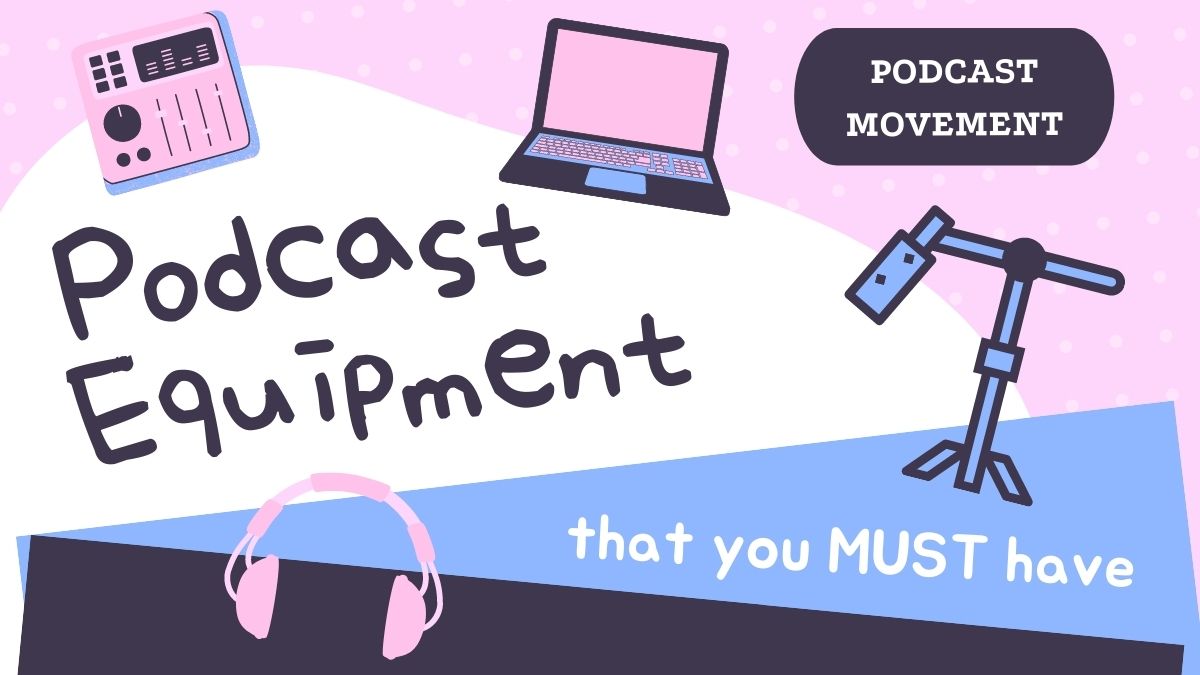Creating narrative podcasts is at once immensely rewarding and immensely difficult. You get to weave so many elements together: interview tape, scripted narration, ambient sound, music, historic recordings. But you also have to weave that all together in a way that keeps your listener engaged and on track.

I’ve learned this first hand crafting stories about marathon and ultra-distance running for Strides Forward, the podcast I host and produce. I come from a long career in the writing and text editing world. I fell in love with the added element of audio when I started working with it in a serious way a bit less than two years ago.
But with increased elements come increased opportunities to muddy the storytelling waters: It’s easy to get lost in the weeds. And if you end up in the weeds, so will your listener.
I’ve landed on some basics I use daily that return me to clarity when I’ve begun to lose my way or make things more complicated than they need to be. And I’m not exaggerating about that daily use: I needed to look no further than my dry-erase board to find these tips.
Even if these ideas aren’t new to you, they're worth brushing up on and keeping front of mind, beginning with returning to your story structure.

1. Return to your story structure frequently

Any well-told story starts with a strong foundation. The “building a house” analogy comes in handy here: a well-built house begins with a strong foundation.
There are a variety of classic arcs or story structures you can follow, the most basic of which is the “beginning, middle, end” structure. A quick Google search can reveal many more.
Whatever structure you choose, stick to it. I find that it’s helpful to check back as I build a story to make sure I don’t stray from my original foundation. This is a great way to determine if you’ve begun to add unnecessary elements.
This can be especially tempting when you’ve gotten some amazing tape, tape you just have to use. And maybe you manage to fit it in, because you love it so much. But really, when you give a hard look at the framework of the story you're telling, this tape doesn’t fit or isn’t necessary.
Returning to your story arc will reveal this. And the sad reality of having to cut it will become clear. Unnecessary additions need to find the cutting room floor. Returning to your structure will help you keep your story tight and engaging.

2. Always move your story forward
This tip goes hand-in-hand with the tip above: Story structure helps you clarify what your story is about and how you will tell it. Always be moving in the direction of telling that story.
It’s easy to get lost in the weeds. And if you end up in the weeds, so will your listener.
At every step, the audio should contribute to getting the listener a little further down the road. If something you want to include isn’t serving that purpose, it’s really likely that that needs to be cut.
Sure, adding colorful details along the way can move your story along in terms of adding emotion or context, but too much will render your listener confused or bored. You do not want to confuse or bore a listener.

3. Show, don't tell

This can be a tricky bit of advice to adhere to. It’s the fine art of getting a point across clearly without coming out and saying what that point is. You want the listener to realize something on their own, to have their “Aha!” moment without you spoon feeding it to them. It’s difficult, but it’s also quite satisfying when you can make it happen, and it’s rewarding for the listener.
Showing brings the listener into the story and allows them to make discoveries on their own; it gets them invested and engaged. Telling does the discovering for them, which can feel flat. It’s informative perhaps, but it’s not terribly engaging.
In hand with “Show, don’t tell” is “Don’t tell the listener what your subject is about to say.” It can be very tempting to introduce a clip by providing a summary or paraphrasing what someone is about to say. Let your subject say it. Use narration to position the clip within your narration or even to set the clip up to be a welcome surprise.

4. Get feedback

You can’t see your story from every conceivable angle. If you are the primary, or perhaps only, person who is involved in creating your narrative podcast, chances are, you are so close to it that you may miss what may be obvious to someone else.
You absolutely do not need to take other people's advice, but good feedback helps you get perspective you won’t get on your own.
Having one or two other trusted individuals give you constructive feedback is very helpful (I urge you to not look to the person who’s just going to say your story is great.) You absolutely do not need to take other people's advice, but good feedback helps you get perspective you won’t get on your own. It’s a great check to make sure your story is clear and interesting.

5. Script like you speak

This is a really easy lesson to overlook and it’s a wonderfully easy (and fun) one to fix. Scripts are written, but writing and speaking, or narration, are very different ways of communicating. What looks good on the page or screen may not sound natural or be easy to phrase or pronounce.
There are a couple of ways to make sure your narration will work for audio. First, read it out loud to yourself. Is this the way you would say something? Your script should be easy for you to read. If it isn’t, make it so. If you’re tripping over phrases or jumbling the same words repeatedly — even better if you find yourself naturally wanting to say something in another way —change it.
You want your script to sound natural. And more specifically, you want it to sound natural for you.
If you aren’t sure if you’re writing the way you’d speak, or you suspect that some of the language isn’t really what people would actually say, pretend you’re explaining the situation to a friend. Stop writing, and just tell the story out loud. Then use those words for your script. Yes, you can clean them up, and make the narration more snappy or tight, but use the words that come out of you in everyday conversations.

The Wrap-Up
One of the most exciting aspects of storytelling, which is what we do in narrative podcasts, is that every story is different.
This keeps our craft challenging and rewarding, but sometimes really frustrating, too. Even the most seemingly simple or straightforward stories can throw up tricky moments that are tough to untangle.
Getting back to basics provides a way to gain perspective and see your way through.





Join the Movement